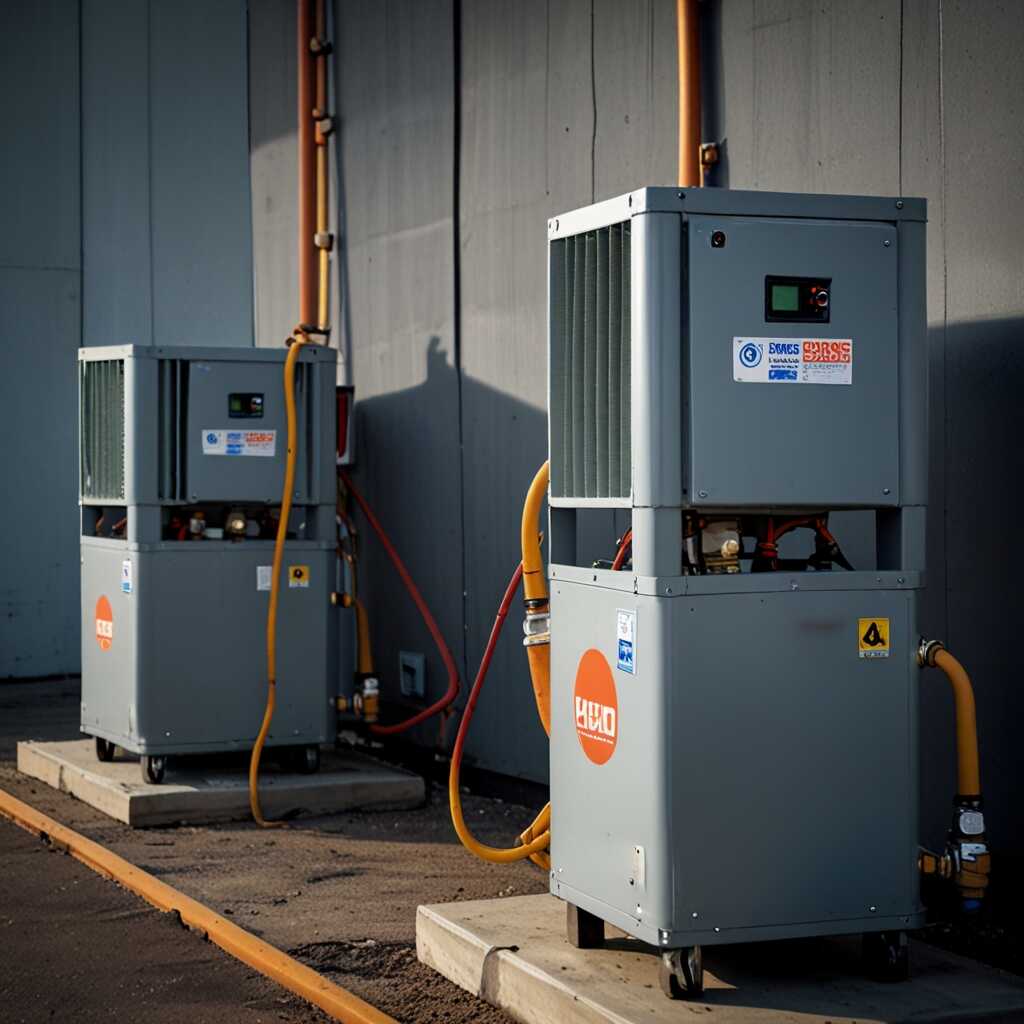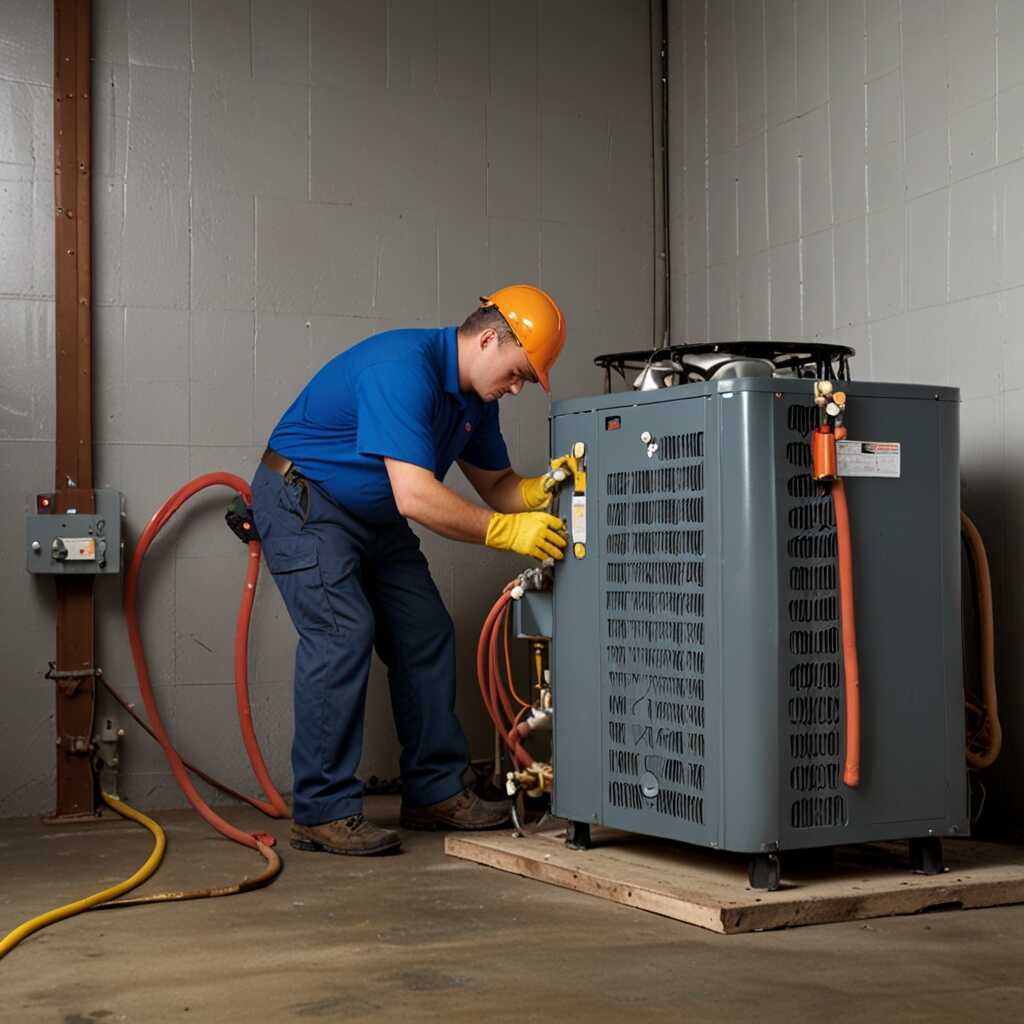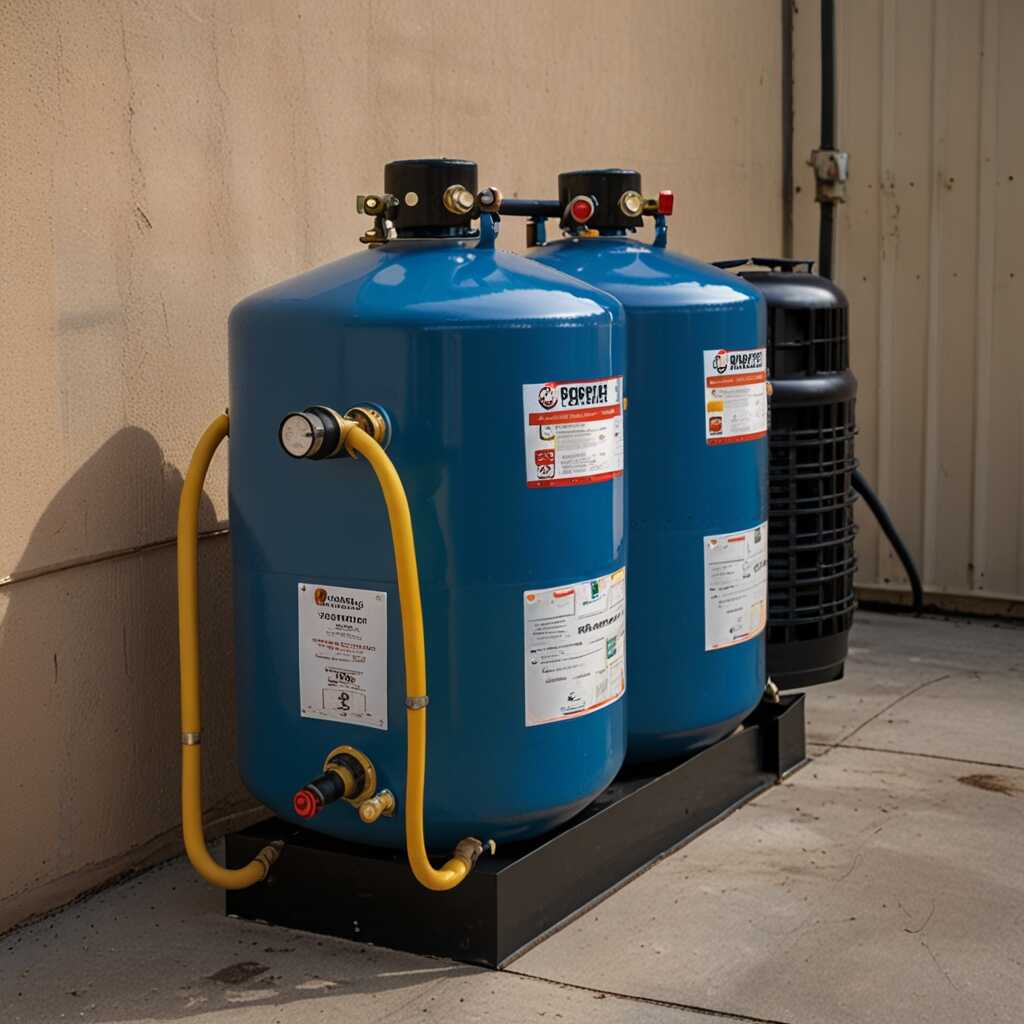Understanding refrigerant recovery machine flow rates is essential for maximizing efficiency in HVAC projects. These flow rates can significantly impact the speed and effectiveness of refrigerant recovery, ultimately influencing job completion times. At Refrigerant Recovery Pro, we provide expert insights into the various factors that affect flow rates. By optimizing these aspects, HVAC professionals can enhance their operational efficiency while ensuring compliance with industry standards.
Essential Features of Refrigerant Recovery Machines Explained
The key features of refrigerant recovery machines include their ability to recover various refrigerants, fast recovery rates, and built-in safety mechanisms. Technologies like dual-stage compressors enhance efficiency by improving recovery speed and reducing system pressure. Advanced filtration systems also play an important role in ensuring that the refrigerants are clean and meet regulatory standards. A high-quality recovery machine can recover up to 95% of the refrigerant in a single session, significantly improving job completion times.
Technologies to Enhance Refrigerant Recovery Performance
Refrigerant recovery machines utilize several advanced technologies to enhance their performance, ensuring efficient operation during HVAC projects. Dual-stage compressors provide excellent reliability, enabling faster recovery processes. They also feature robust filtration systems that guarantee purity in recovered refrigerant. This feature is crucial for environmental compliance, primarily considering the regulations active until 2025. Additionally, the best machines incorporate digital controls that allow for easy monitoring of recovery metrics, helping technicians make informed decisions quickly. These components contribute to improved overall performance, delivering dependable results on jobs.
Key Factors Affecting Flow Rates in Recovery Machines
Flow rates in refrigerant recovery machines are influenced by several key components. First, compressor specifications play a vital role in determining how efficiently the machine can recover refrigerants. Higher-quality compressors typically provide better performance. Ambient temperature also impacts the machine’s ability to perform, with lower temperatures potentially slowing recovery speed. Furthermore, the type of refrigerant affects flow rates. Each refrigerant has unique physical properties that may require specific handling techniques. Understanding these interactions helps HVAC technicians optimize recovery performance.
Understanding Compressor Specifications and Their Impact onEfficiency
Compressor specifications primarily determine the efficiency of refrigerant recovery machines. Higher horsepower compressors often deliver greater flow rates, allowing for faster recovery times. Models designed for various refrigerants, including R-410A and R-22, offer features optimized for those specific chemicals. For instance, a 2025 model with variable speed capabilities can handle diverse refrigerants more effectively. These advanced specifications enhance efficiency, especially in varying ambient temperatures, ensuring reliable performance. Technicians should review and compare models based on specific project needs to select the best option for optimal flow rates.

Evaluating Different Refrigerant Recovery Equipment Options
This section reviews the different types of refrigerant recovery machines available on the market. Each machine’s flow rates and performance metrics vary significantly. Selecting the right equipment for your HVAC tasks is essential. Good reviews highlight machines that provide high reliability and efficiency. Testing various machines helps technicians understand which models can handle specific refrigerants effectively. The performance metrics include recovery speed, capacity, and durability, ensuring optimal results on the job. A solid understanding of these factors helps HVAC professionals choose machines that enhance job efficiency and reduce completion times.
Choosing the Best Refrigerant Recovery Machine for Your Needs
When selecting a refrigerant recovery machine, consider the specific features that enhance performance. Top-rated models often provide superior flow rates, allowing faster recovery of refrigerant. For example, many machines in 2025 offer average flow rates exceeding 2.5 pounds per minute, significantly improving job efficiency. Look for machines designed with robust compressors and large storage capacities to handle various refrigerants. Reliable brands typically include user-friendly controls that simplify operation. Comprehensive reviews and comparisons can assist HVAC professionals in making informed decisions. The right choice ensures that the technician can deliver excellent service while maintaining regulatory compliance.
Key Numerical Insights for Refrigerant Recovery Processes
- Flow rates can range from 1 to 20 CFM (cubic feet per minute).
- High-performance models can recover refrigerants at rates exceeding 10 CFM.
- Typical recovery times for residential units are around 30 to 90 minutes.
- Recovery efficiency often exceeds 95% for optimal machines under the right conditions.
- The average refrigerant recovery machine weighs between 40 to 80 pounds.
- Temperature variations can affect recovery times by up to 30%.
- Most regulations require technicians to recover at least 90% of refrigerants from systems.

Importance of Regular Maintenance for Optimal Performance
Regular maintenance is crucial for maintaining the reliability and efficiency of refrigerant recovery machines. Key components include cleaning filters, checking seals, and ensuring proper refrigerant flow. These tasks enhance performance and extend the lifespan of your equipment. Factors like the machine’s age, model, and usage patterns significantly influence maintenance needs. For example, newer models may require different attention than older ones. The recommended service intervals typically suggest maintenance every six months or after a set number of hours of use, depending on the manufacturer’s guidelines.
Essential Maintenance Tasks to Improve Efficiency
Essential maintenance tasks for refrigerant recovery machines significantly improve their efficiency and durability. Technicians should regularly clean the coils and replace any worn filters to ensure optimal airflow and refrigerant flow rates. Testing electrical connections and verifying the vacuum level can help diagnose potential issues early. Regular inspections help identify wear and tear. This proactive approach minimizes downtime during HVAC jobs. Effective maintenance not only preserves the machine’s performance but also boosts operational efficiency on every project. Refrigerant Recovery Pro offers valuable guidance on these essential tasks, ensuring technicians are equipped with the best practices.

Strategies to Enhance Job Efficiency through Flow Rate Management
To optimize flow rates during refrigerant recovery, technicians should focus on proper equipment setup and maintenance. Regularly check hoses, fittings, and connections for leaks to ensure reliability. Use machines that are tested and designed for high efficiency. Consider the refrigerant type, as it affects the recovery speed. Top-rated refrigerant recovery machines provide maximum flow rates, often around 10-15 CFM. Understanding the specifications listed in product reviews enhances choices for tools suited for specific jobs.
Essential Techniques for Flow Rate Optimization
Essential techniques for flow rate optimization include ensuring that your recovery machine is compatible with various refrigerants. Different refrigerants have different viscosities, affecting flow rates. Selecting machines with durable features for handling various pressures enhances overall performance. Regular training helps HVAC professionals become familiar with equipment capabilities, ensuring they can achieve peak flow rates in practical situations. This combination of understanding equipment performance and proper operation techniques results in improved job efficiency and compliance with regulations.
Advantages of Improving Recovery System Functionality
- Faster job completion enhances technician productivity on site.
- Higher efficiency reduces refrigerant loss and promotes environmental protection.
- Improved systems lower overall operational costs for HVAC businesses.
- Effective recovery results in compliance with EPA regulations.
- Reduced strain on the refrigerant extends the life of recovery machines.
- Enhanced performance provides competitive advantages in the HVAC market.
- Better efficiency translates to higher customer satisfaction and repeat business.

Navigating Regulatory Standards in Refrigerant Recovery
Understanding regulatory compliance is vital in refrigerant recovery. Key regulatory standards include EPA guidelines and ASHRAE recommendations. The Environmental Protection Agency (EPA) establishes rules to ensure safe handling of refrigerants. These regulations directly impact flow rate efficiency and operation methods of recovery machines. Companies must adhere to these standards to avoid fines. Reviews of various refrigerant recovery systems can help HVAC technicians select equipment designed to meet compliance. As a goal, recovery machines should efficiently recover up to 90% of refrigerant, enhancing operational efficiency while adhering to regulations.
Importance of EPA Regulations on Recovery Efficiency
The EPA regulations offer guidance on refrigerant types and handling procedures. These standards help HVAC professionals optimize flow rate efficiency. Recovery machines designed to meet these regulations often include features for enhanced reliability and performance. Many models can handle various refrigerants, ensuring compliance with industry requirements. Technicians should regularly review equipment performance to ensure it meets EPA standards. Regular testing and data collection enhance HVAC operations, contributing to effective environmental management. Following these guidelines results in faster job completion without compromising quality. The right equipment can significantly improve recovery rates.
Advanced Techniques for Improving Recovery Efficiency
Latest technologies, such as variable speed compressors and advanced vacuum pumps, enhance refrigerant recovery flow rates. These innovations provide durability and reliability, ensuring effective refrigerant management. Additionally, data from recent studies show that optimizing tubing design and using high-efficiency recovery machines can significantly improve system performance. Experts recommend reviewing system specifications to ensure compatibility with these advanced recovery methods. Experienced technicians should explore techniques that allow easy integration of these enhancements, which can lead to impressive results.
Comparative Analysis of Recovery Techniques per Refrigerant Type
Understanding the differences in performance of advanced recovery techniques across various refrigerant types is crucial. For instance, HFCs and HCFCs often require specific vacuum levels for optimal recovery. High-powered equipment designed for these refrigerants helps improve recovery efficiency. Technicians should evaluate equipment based on specific refrigerant properties, aiming for systems that can handle diverse fluids and maximize flow rates. Proven testing and comparison of each method yield valuable insights, enabling HVAC professionals to select the best tools for job efficiency.
Relevant Brands and User Profiles in Refrigerant Management
- Brand A focuses on commercial recovery systems, ideal for large HVAC projects.
- Brand B offers compact units suitable for residential applications and small spaces.
- Brand C is known for versatile machines, appealing to both contractors and DIY enthusiasts.
- Brand D excels in eco-friendly solutions, attracting environmentally-conscious users.
- Brand E specializes in lightweight options, perfect for technicians on the go.
- Users include HVAC technicians, ensuring efficient recovery protocols and compliance.
- Environmental officers prefer machines that meet regulatory standards and minimize waste.
Common Pitfalls in Flow Rate Management
HVAC professionals often make common mistakes that negatively impact flow rates in refrigerant recovery. Some of these mistakes include using an improper hose length, selecting the wrong recovery machine for the job, or failing to regularly maintain equipment. Technicians should avoid using excessively long hoses, as they can reduce efficiency. Different models provide various flow rates, which can lead to inefficiencies if not matched correctly. Regular maintenance ensures reliability, enhances performance, and helps achieve optimal flow rates. Understanding the ideal flow rate range allows technicians to complete jobs effectively, while troubleshooting tips can prevent costly errors.
Essential Tips for Optimizing Flow Rates in Refrigerant Recovery
To optimize flow rates effectively, technicians should focus on using proper hose lengths and sizes that are compatible with their recovery machines. The right diameter enhances flow and minimizes pressure loss. Regular testing and maintenance of the equipment are vital. This includes checking for leaks, replacing worn parts, and ensuring proper refrigerant levels. Review manufacturer guidelines for flow rate specifications and adhere to them. Choosing a recovery machine designed for the specific refrigerant type can also improve efficiency. Maintaining a clean work area helps avoid obstructions that can impair flow. With expert knowledge and consistent practices, HVAC professionals can significantly enhance their refrigerant recovery processes.